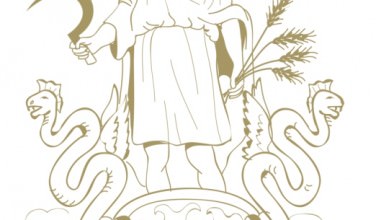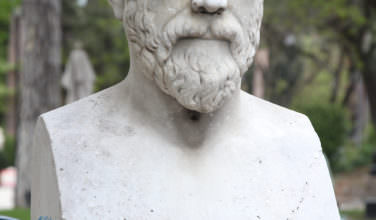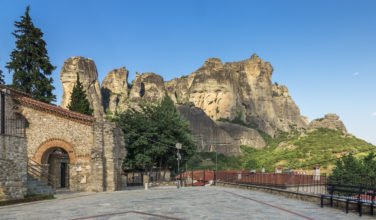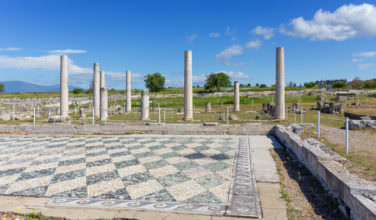About Phorcys – Sea God of Greek Mythology
Comments Off on About Phorcys – Sea God of Greek Mythology
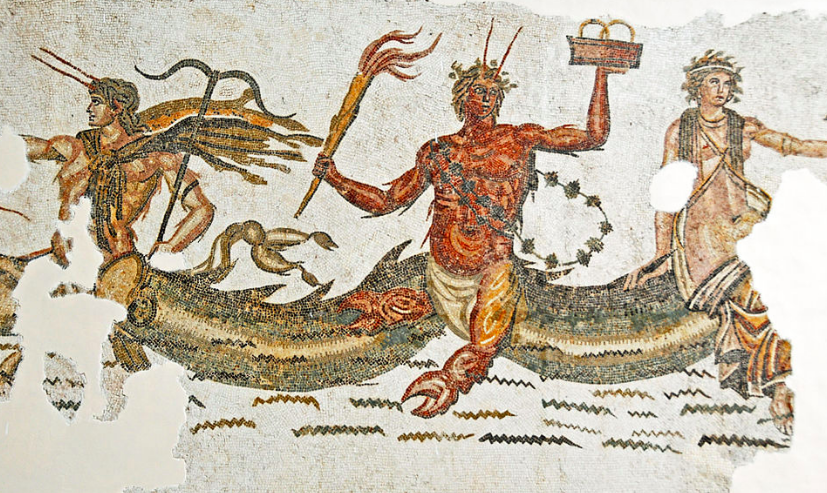 The names of classical Greek deities like Athena and Apollo are instantly familiar to modern students of mythology. The ancient pantheon was also populated by countless minor gods and mythological forces, however. Phorcys, a sea-god associated with powerful unseen dangers, was just one such figure.
The names of classical Greek deities like Athena and Apollo are instantly familiar to modern students of mythology. The ancient pantheon was also populated by countless minor gods and mythological forces, however. Phorcys, a sea-god associated with powerful unseen dangers, was just one such figure.
Origins of Phorcys
The Olympians most people know of weren’t the first gods and goddesses to dominate the legends of antiquity. They were preceded by the Protogenoi. These “first-born” primordial deities sprang up from the original state of Chaos and were the progenitors of gods like Zeus and Hera.
Phorcys was one of many sea gods among the ranks of the Protogenoi. Some sources describe him as the son of Gaia, the Earth, and her own immaculately conceived son Pontus, the sea. Others say that he was the child of Tethys, a Titan, and her brother Oceanus, both of whom represented the seas that continue to dominate Mediterranean life to this day.
Famous Relatives
Although Phorcys doesn’t appear in most of the myths that have survived into the modern era, it’s commonly believed that the Greeks associated many other mythological figures with his lineage. For instance, Phorcys and Ceto, a sea goddess, bore numerous children. Notable offspring included:
- Ladon – a serpent that guarded the golden apples made famous in the myth of Hercules,
- Gorgons – Medusa and her two sisters
- Hesperides – nymphs associated with the sunset
- Echidna – a half-snake, half-woman monster who mothered famous creatures like Cerberus, the Hydra and the Sphinx
- Thoosa – the sea-nymph mother of the Cyclops
- Graeae – a trio of old crones who told the hero Perseus the secret to killing Medusa
Interestingly, just as different scholars cited numerous origins for Phorcys himself, they weren’t in complete agreement about which deities were his children. As with many mythologies, cultural exchange and word of mouth might have impacted how details were recorded and passed down.
It’s also worth noting that without Phorcys and Ceto, the key figures in a number of the world’s most well-known Greek myths would be notably absent. The pair may have been parents to unimaginable horrors, but they definitely made for enthralling tales.
Life of Phorcys
In his day, Phorcys played a significant role in the prevailing cultural worldview. Among the sea gods, he and his wife were the patrons of some of the largest marine creatures known to humans, like whales and seals.
Ancient Greco-Roman mosaics from 4th-Century Antioch and the Trajan Baths of Acholla show Phorcys as a gray-haired man with the tail of a fish. Artists depicted him with human portions that were mixed with crab-like attributes, such as red, spiky skin and clawed forelegs. He was often portrayed carrying a flaming torch.
Ancient literary sources also suggested that islands like Ithaca of Odyssean legend held their harbors sacred to Phorcys. This makes sense considering the fact that he and Ceto were believed to reflect some of the sea’s most terrifying hazards.
Sources:
Wikipedia – Greek Primordial Deities
Categorized in: Greek Mythology
This post was written by Greek Boston
Share this Greek Mythology Article:


